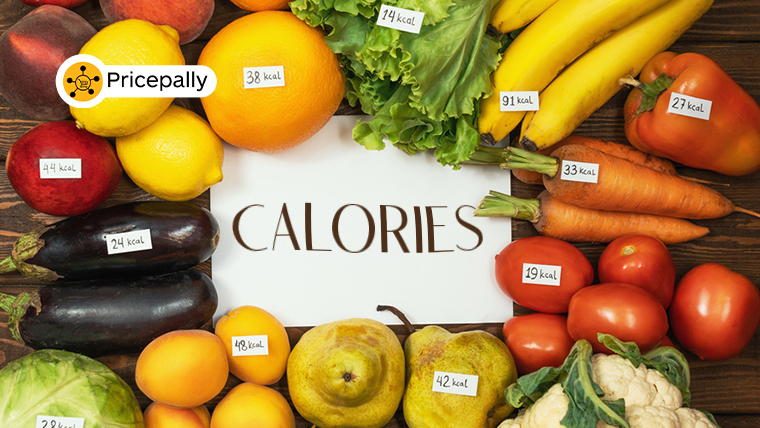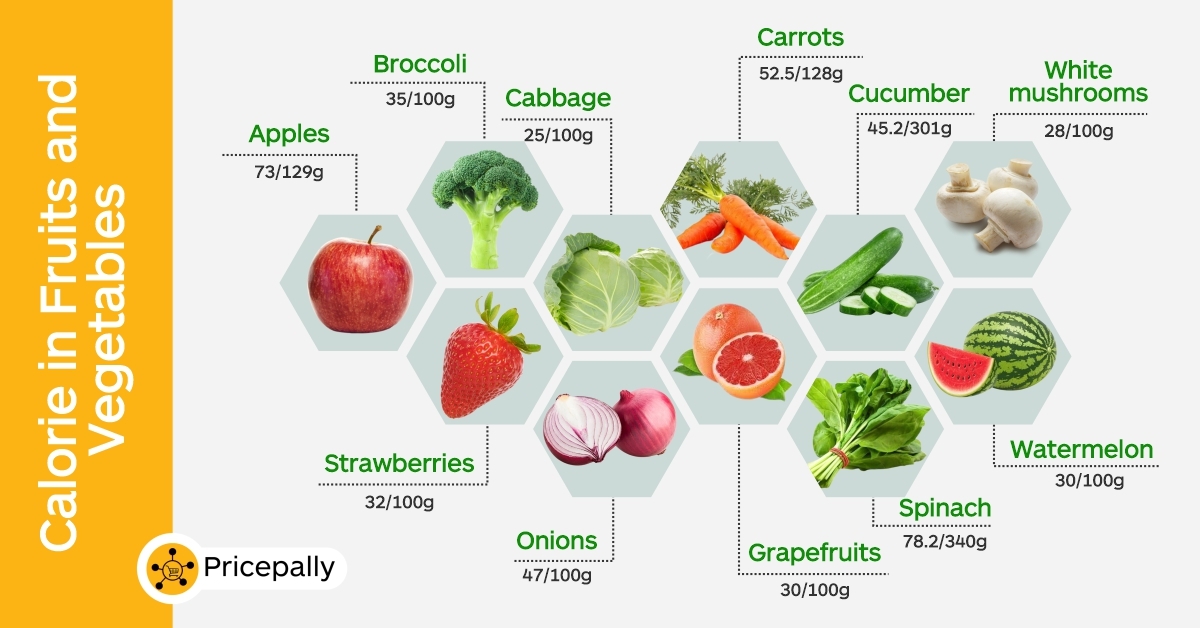Low-calorie foods should rank highly on your food list if you’re trying to restrict your body weight. However, there’s insufficient information about the calorie profile of Nigerian foods, as this tweet suggested.
Nigerian food is so demonized in diet/fitness culture and it is so inaccurate. I wish a nutritionist will run through the calorie profile of the most popular Nigerian dishes cos there is so much disinformation and it bothers me.
— ThatPortharcourtBoy aka Nnukwu Nmanwu (@ThatPHCBoy) April 6, 2023
Our piece will end that struggle for you because we’ve compiled a list of low-calorie foods in Nigeria you should eat.
Online shopping: Which store is the best for fresh low-calorie foods in Nigeria?
The source of food determines its quality and freshness. Unlicensed grocery stores don’t follow industry guidelines for food procurement and sourcing. Pricepally, however, procures food directly from farmers and government-sanctioned suppliers.
Our quality foods are pocket-friendly, as our prices are up to 40% cheaper than local markets in our operating locations in Lagos, Abuja, and Port Harcourt.
Some of the fresh food items you can buy from us include:
- Stew and soup ingredients
- Fruits and vegetables
- Spices and seasonings
- Poultry meat, seafood, and red meat
- Foodstuffs like rice, beans, sweet potatoes, etc.
6 low-calorie foods in Nigeria
Your body needs calories—the energy you get from foods and drinks—to survive. The more energy you get from a food, the higher the calorie content. The body stores excess calories as body fat.
Sex, age, genetics, and lifestyle choices influence the energy your body needs. For instance, people aged 40 and over need fewer calories because muscle mass, which burns more calories than fat, gradually decreases while fat increases, according to Liz Hill, a nutrition specialist at the United States Department of Agriculture (USDA).
The standard body calorie requirement is 2,000 kcal for women and 2,500 kcal for men. A low-calorie diet isn’t “going on a hunger strike.” Instead, it restricts the calorie content and, by extension, the types of food you eat to manage your body weight. Typically, a low-calorie diet is between 1,000 and 1,500 kcal.
We listed six low-calorie nutritious foods you should include in your diet plan.
1. Unripe plantain
Unripe plantains are low in calories and rich in essential nutrients, including vitamins A, B, and C, magnesium, calcium, and potassium. It also contains complex carbs and dietary fiber, which limits the absorption of other carbohydrates and maintains healthy blood sugar levels in the body. According to the USDA, raw, unripe plantains (267g) contain 406 kcal, 5g of dietary fiber, and 0.2g of fat.
Preservation tip: Don’t store ethylene-producing fruits like apples and ripe tomatoes in the same area as unripe plantains. Unripe plantains are sensitive to ethylene, which promotes ripening.
2. Moi-moi and beans
Beans are a low-calorie, nutrient-dense food rich in protein and fiber, two essential nutrients for losing weight. Besides rebuilding the body’s tissues, proteins reduce your appetite for food by regulating satiety hormones. The fewer cravings you have for food, the fewer calories your body needs.
Proteins make you burn more calories, including during rest periods. For instance, a high protein intake burns 80-100 calories per day. The more calories you burn, the more weight you’ll lose. In Nigeria, beans are prepared as a boiled puddle garnished with vegetables, spices, eggs, and fish. As a result, moi-moi is rich in weight-loss-friendly proteins and fiber.
3. Eggs
Hunger is one of the challenges of strict dieting. Filling your plate with high-quality proteins is one way you can satisfy hunger without consuming excess calories.
Eggs fit the diet bill because they contain high-quality proteins that make you feel full and consume fewer foods or snacks between meals. The high protein content explains why eggs rank 50% higher than white bread and other meals of similar calorie content on the satiety index, the measure of fullness you feel after eating.
Including eggs in your breakfast menu is the ideal way to reduce calorie intake because high-protein foods reduce cravings during the day. A 2015 study corroborated this stance after reporting that an egg-filled breakfast promotes weight loss.
A common misconception about eggs is their fat content. Indeed, it contains dietary cholesterol, but it has little effect on the “bad” low-density lipoprotein (LDL) cholesterol that causes heart disease. However, diabetics should be wary of egg consumption. A 2018 study suggested that high egg consumption among individuals with type 2 diabetes (T2D) increases the risk of heart disease.
Here are some tips for eating eggs:
- Pair them with fiber-rich foods like vegetables and unripe plantains once a day.
- Cook them until they’re hard enough to kill harmful microorganisms.
- Use a minimal volume of oil when frying or cooking. Oils or butter affect the caloric and fat contents.
4. Fruits and vegetables
Do you want to eat “sweet” foods without compromising your caloric values? Then opt for fruits; they’re nature’s healthy candy. Besides supplying low energy content, low-calorie fruits—like vegetables—supply vitamins, antioxidants, water, and essential plant compounds.

Cooking tip: Vegetables lose large quantities of nutrients when you cook them in water. For example, broccoli, spinach, and lettuce may lose 50-60% of their water-soluble vitamin B and C contents after boiling. Microwaving vegetables may cause 20-30% vitamin C reduction. Don’t overcook vegetables or soak them in hot water to preserve their nutrients.
Examples of selected fruits and vegetables and their calorie content are listed below.
5. Fish and seafood
Protein, the nutrient you need to lose weight, is abundant in fish and seafood. Some fish species (e.g., mackerel, aka “titus fish”) are rich sources of healthy fats like omega-3 fatty acids—the healthy polyunsaturated fat your body can’t produce from scratch but needs for optimal brain and heart development.
Additionally, omega-3 fatty acids reduce the risk of depression. This is particularly important because body weight (underweight or overweight) is a risk factor for depression.
Seafood and fish regulate blood sugar levels, which may decrease the risk of developing type 2 diabetes. A 2017 study buttressed this theory when it showed that obese individuals who consumed fatty fish had significant blood sugar improvements compared with those who didn’t.
Examples of low-calorie fish and seafood you should include in your diet include;
Cooking tips: The omega-3 fatty acids in fish are sensitive to high temperatures. Frying low-calorie fatty fish significantly degrades their omega-3 fatty acids, unlike boiling, which preserves the healthy fat.
Avoid frying fish with unhealthy oils at high temperatures for extended periods because excess heat may introduce polycyclic aromatic hydrocarbons (PAH), which may cause cancer. Instead, do the following:
- Don’t overlook fish before frying
- Use healthy oils for deep frying. Examples of healthy oils are coconut, avocado, palm oil, peanut, and animal fats (lard, tallow, and ghee).
6. Herbs and spices
Spices and herbs are more than flavor repositories. They provide several health benefits, including glucose and cholesterol-lowering activities. For instance, the antioxidants in cumin are beneficial for weight loss and cholesterol management.
Examples of low-calorie herbs and spices are:
Food tip: The Nigerian pepper soup is perfect if you want a mix of herbs and spices, vegetables, and fish or seafood.
Frequently Asked Questions about low-calorie foods in Nigeria
Do cooking methods affect nutritional value?
How you cook your food impacts its caloric and nutritional values. Frying increases calorie content because of high-calorie fats and oils. This is why you should use small quantities of healthy oils for sautéing and stir-frying. Boiling, steaming, baking, and sautéing are beneficial cooking methods that don’t alter the nutritional composition of food significantly.
How many eggs should I eat per day?
There’s no consensus about the number of eggs that make up a healthy diet. The cholesterol content of eggs is the major cause of the discrepancy. Despite containing cholesterol, eggs may not raise heart disease risk factors, as revealed in a 2017 study involving individuals with diabetes.
Another 2020 study observed that people who eat eggs for an extended period are likely to have higher cholesterol levels than those who don’t, especially if they eat eggs with high-cholesterol foods.
Nonetheless, the cholesterol content of your overall diet, genetics, and cooking methods are the main factors affecting the number and frequency of eggs you should eat. For instance, 1-2 eggs per day are safe for adults with normal cholesterol levels without heart disease risk factors.










How Pricepally is reinventing Bulk buying Fresh-farm foods in Nigeria.
PRICEPALLY FOOD PRICE INDEX
WORLD EARTH DAY 2021
Will Standardized Food measurement become widely adopted in Nigeria?
What’s The Rave About Smoked Fish?
PricePally Partners with Trade Lenda to Provide Easier Access to Loans for Farmers and Suppliers
PricePally and Stanbic IBTC Partner to Make Grocery Shopping More Affordable with Buy Now, Pay Later
Easy Homemade Smoothies for Nourished Health